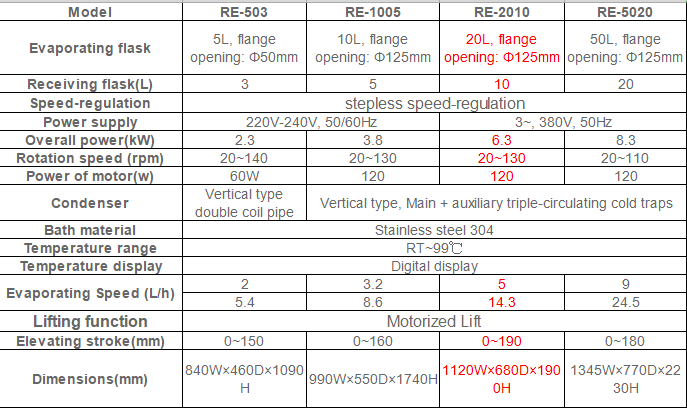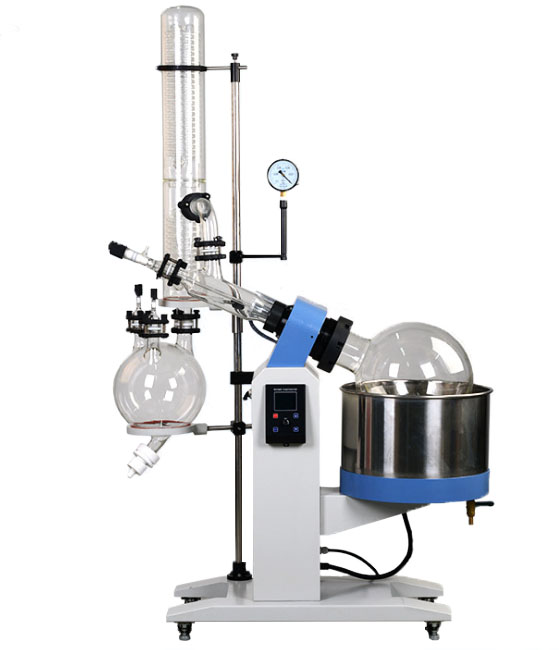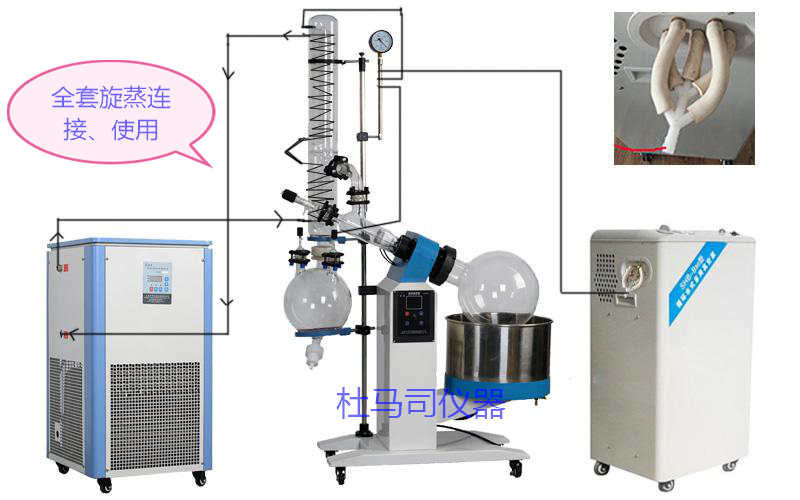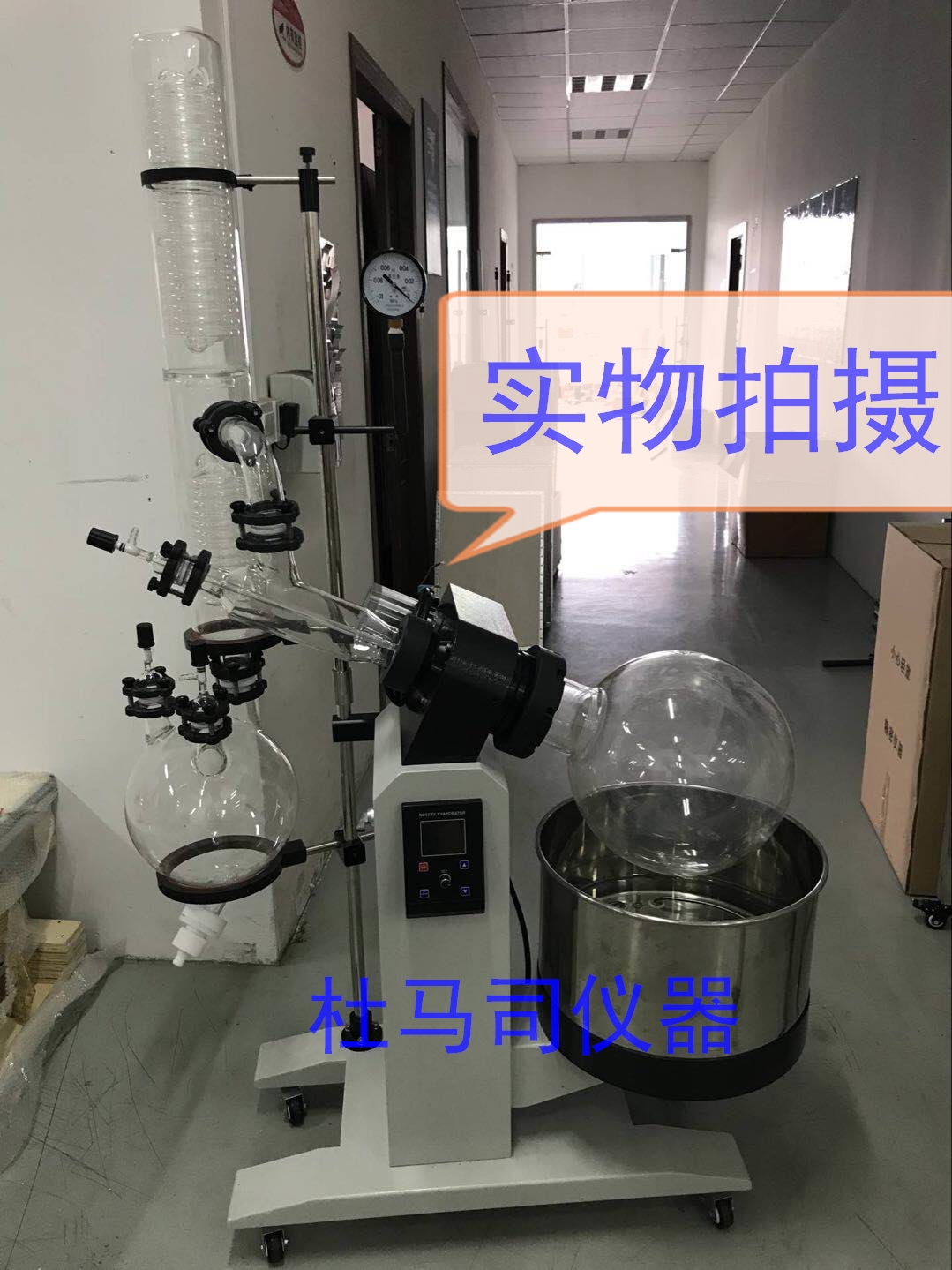Products
Basic Information
Product Name:Rotary evaporator
Product Model:RE-2010
Product Brief:
Large capacity and large opening of evaporating flask give larger evaporation surface. The evaporating flask keeps rotating when it is constantly heated by water bath, and solvent evaporates more efficiently under vacuum condition. It can be used for pilot-scale production in biology engineering, pharmaceutical industry, chemical industry and food processing. It usually works with water circulating vacuum pump, diaphragm vacuum pump, recirculating chiller, constant-temperature circulator, low temperature circulating pump, etc.1 Dumas specializes in the production of all kinds of experimental equipment, such as molecular distillation, rotary evaporator, glass reactor, etc,Please contact dovmxsh@126.com.
Product FeaturesProduct characteristics
As the vaporizer is vacuumed, the boiling point of the solvent to be distilled decreases. In general, the components distilled from samples are the target components in chemical research, such as the extraction of a natural component from organic synthetic samples. Rotary evaporators are often used to separate components with low boiling points, such as hexane and ethyl acetate, which are liquid at room temperature and atmospheric pressure. In addition, through the standard operation, it can also achieve the removal of some components contained in the sample.
Compared with the vacuum distillation realized by using standard distillation glass components (without rotating distillation device) under the action of vacuum pump, the vacuum distillation of rotating evaporator has the following advantages:
Due to the inertia and friction between the liquid sample and the evaporation bottle, the liquid sample spreads on the inner surface of the evaporation bottle and forms a layer of liquid film. Compared with the static state, the heated and evaporated area of the sample increased;
The liquid film formed by the force generated by the rotation of the sample can effectively inhibit the boiling of the sample.
To sum up the features and its convenience, the modern rotary evaporation instrument can be used to distill the vast majority of samples quickly and mildly.
Product ParameterProduct parameters

Product InformationProduct information
A rotary evaporator is a device used in Chemical Laboratories for efficient and gentle removal of solvents from samples by evaporation.
The main components of a rotary evaporator are:
The motor unit which rotates the evaporation flask containing sample material.
A vapour duct which acts as an axis for sample rotation, and a vacuum tight conduit for the vapour being drawn off of the sample.
A vacuum system (not integral part of the equipment) to substantially reduce the pressure within the evaporator system.
A heated fluid (water / thermic fluid) bath to heat the sample being evaporated.
A condenser with double coil through which the coolant passes.
A condensate collecting flask at the bottom of the condenser, to collect the distilling solvent after it recondenses.
A mechanical or motorized mechanism to quickly lift the evaporation flask from the heating bath or lower the heating bath so that the evaporation flask does not remain in contact with bath.
The vacuum evaporators as a class function because lowering the pressure lowers the Boiling Points of component liquids in it. Generally, the component liquids of interest in applications of rotary evaporation are solvents that one desires to remove from a sample after an extraction, for instance, following a natural product isolation or a step in an organic synthesis. Use of a Rotary Evaporator, therefore allows liquid solvents to be removed without excessive heating of what are often complex and sensitive solvent-solute combinations.
Previous: Single glass reactor
- Molecular distillation is a special liquid liquid separation device
- What will affect the work of molecular distillation equipment?
- The principle and detailed steps of the molecular distillation process
- The advantages of molecular distillation equipment in practical applications
- The molecular distillation process is economical and environmentally friendly
- Analyze the working principle of molecular distillation apparatus
- Tangerine oil extraction
- Feed position and filler type of molecular distillation unit
- What is the main purpose of molecular stills?
- How to Improve the Operational Capacity of molecular distillation apparatus

18915717989
Online Service
 WeChat
WeChat









